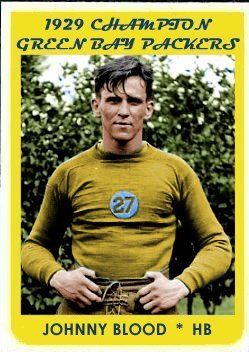Boston columnist Bob Ryan eulogized the late Jack Concannon (born on February 25 1943 in Boston) as being “Flutie before Flutie” since both were larger-than-life local legends known for being thrilling, scrambling quarterbacks. However, Concannon was 6’3” not 5’9” and his most famous moment at Boston College wasn’t a 50-yard Hail Mary pass to beat Miami, but instead the 79-yard “Serpentine Run” for a spectacular touchdown in a loss to Ernie Davis’ Syracuse team in 1961. In 1963, the celebrated Concannon was even on the cover of the NCAA Guide.
Despite being the top pick of the hometown Patriots in 1964, the BC Eagle quarterback signed with the Philadelphia Eagles because they made a more lucrative offer. With Philadelphia, however, Jack fell into a three-quarterback competition with Norm Snead and King Hill and would attempt only 103 passes in three years, completing less than half of them for four touchdowns and eight interceptions. Jack’s first NFL start came in the final home game of his rookie year against the Cowboys. Joe Kuharich felt that the rookie’s scrambling would counter the Cowboy blitzes, and Concannon gained 99 yards on 8 carries with his scrambles and completed 10 passes for 134 yards and two scores in a win over Dallas. However, Concannon would not start again for Philadelphia until the end of the 1966 season when he led the Eagles to victories over the Steelers and Browns.
The following season, he was traded to the Bears for Mike Ditka and spent five mostly unsuccessful seasons in Chicago, although he did appear in both MASH and Brian’s Song during that time. He finished a lackluster career with two seasons as a backup in Green Bay and Detroit. Concannon averaged close to five yard per carry during his career and gained 1,026 yards on the ground, but was not a NFL passer. He had trouble finding secondary receivers, threw a lot of interceptions and averaged a puny 5.6 yards per pass. He was 20-24-1 as a starter (0-2 in Green Bay), and his passer rating of 54.8 was 17 percent below the league average for his time. He was often said to be a halfback playing quarterback and probably would have had a better career as a running back.
(Adapted from The Quarterback Abstract.)



Second custom card is colorized.

























